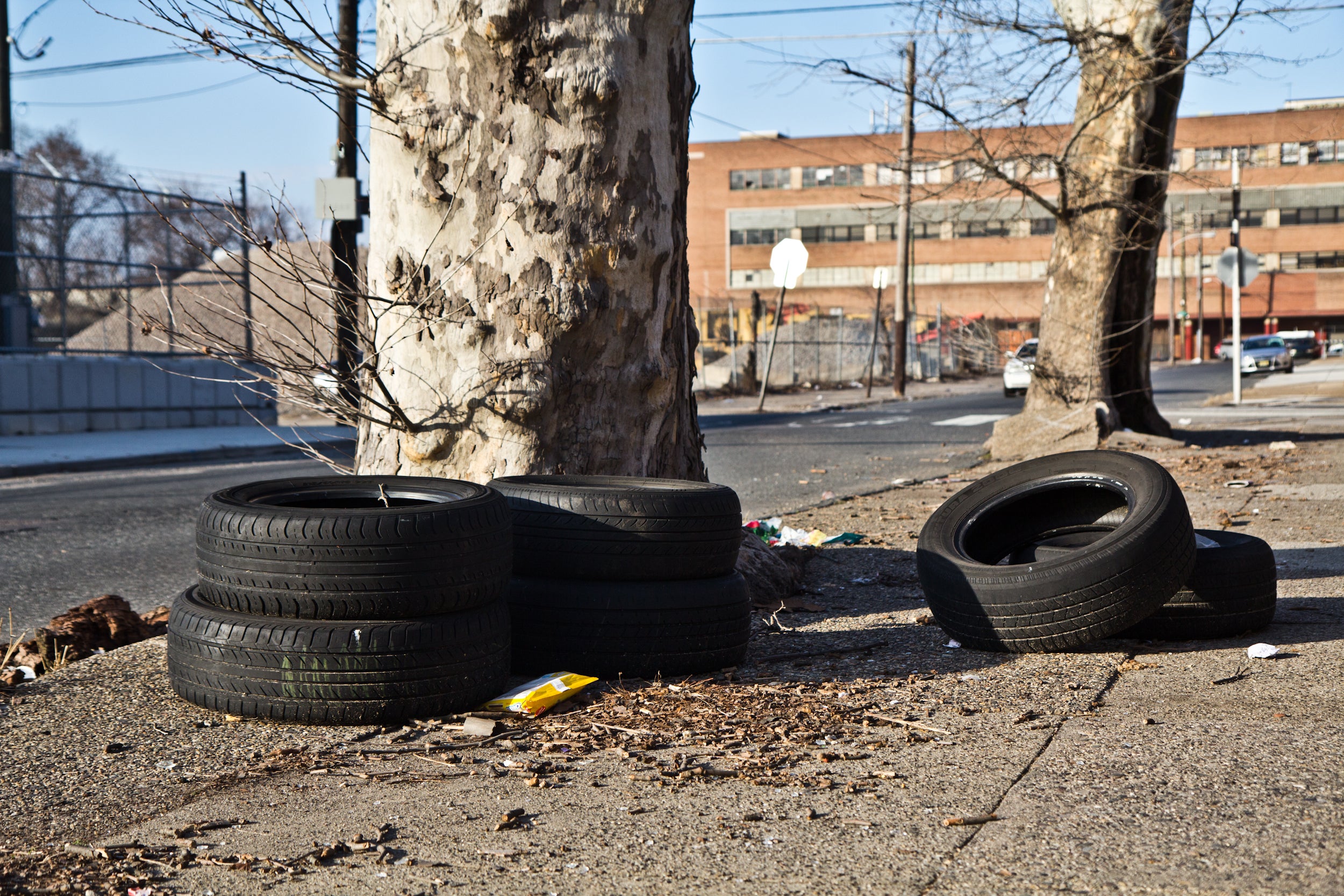Why street sweeping alone won’t solve Philly’s litter problem

By Nic Esposito
Even though my neighbors and I pick up trash out front of our houses every day, and we’ve turned a total of 12 vacant lots on our block into green space, we know that we will never stop the litter conditions on our block until we stop the illegal dumping on the next block over. And as Mayor Jim Kenney’s Zero Waste and Litter Director, I know that we will never equitably clean up Philadelphia until we first address the scourge of illegal dumping across the city.
Philadelphia’s litter problem is systemic and persistent. It’s been generations in the making and is the result of a wide range of factors at the local, state and federal level such as the population loss that saddled our city with a diminished tax base and tens of thousands of vacant lots that now serve as dump grounds for the explosion of waste in our country that has tripled since the 1960’s.
Now, though, the Kenney Administration hopes to address Philly’s litter problem in a new way, focusing on data and collaboration. That’s why the Zero Waste and Litter Cabinet was created and why one of the first priorities of the Cabinet was the development of a city-wide Litter Index.
This Litter Index, covered in a recent Plan Philly article, is what we think will lead to the solutions we need to address Philly’s litter problem. But as the person who oversaw this work, I feel that a singular focus on street sweeping missed the point of the litter index and what the Zero Waste and Litter Cabinet aims to accomplish.
There is a perception that since a majority of neighborhoods on the litter map received a 2 rating (2 rating being litter in the amount that can be picked up by a single individual), a focus on street sweeping will make a large impact on litter in Philadelphia. While I do not deny that street sweeping could be an effective tool for cleaning up litter in neighborhoods receiving a 2 on the litter index, there are far too many neighborhoods in Philadelphia that are scored as 3’s or 4’s which indicate heavy dumping.
As someone who has worked in operations for the city’s Department of Parks and Recreation and traveled all over this city, I have witnessed what this dumping looks like on the ground and how detrimental it is to communities. And as a former community organizer who works in an administration that prioritizes growth with equity, I feel passionately about this being the top priority.
In short, in a city with extremely limited resources, the focus must be on those neighborhoods where litter and short-dumping are worst.
There is also an economic argument to be made for why this is needed. As has been reported by other media outlets, it would take a one-time investment of $12 million as well as $5 million per year to bring back city-wide street sweeping. However, as was reported in the Zero Waste and Litter Action Plan, we are spending over $8 million each year just cleaning up heavy illegal dumping in the neighborhoods where we are seeing 3’s and 4’s, not to mention the other resources spent cleaning up the household waste being dumped near trash cans.
It is worth mentioning that even with all of these challenges and budgetary restraints, Philadelphia does sweep streets. Over the course of a typical year, the Streets Department mechanically cleans over 50,000 lane miles. Streets conducts cleaning on all major commercial corridors once a week and cleans up after all City-sanctioned special events, including on the Parkway where the same spot may be cleaned multiple times in the course of a single clean-up. The Streets Department also includes other multi-lane streets in commercial corridors when it is doing its cleanups.
We would love to provide this service City-wide on a more regular basis. But as I pointed out in Plan Philly’s article, the investment and magnitude of the job is not something we can do overnight. We need data like the Litter Index to understand the issues we are facing.
Because regardless of whether it’s local government or residents that sweep the streets, we can only solve this decades-long litter problem if the identify and address those systemic issues. To anyone who questions what City Hall is doing, I invite them to really take a long look at all of the resources, information and the Cabinet’s programs on cleanphl.org. And if our government is going to step up, then we need the residents to do the same by not just constantly cleaning up the problem, but by also understanding why litter happens in their neighborhood and what they can do to prevent it.
That’s why each litter score is accompanied with information on a neighborhood’s recycling diversion rate, if the block has a block captain and provides the name of the local Registered Community Organization (RCO) or Parks Friends Group. When I searched my address and learned that I did not have a block captain, I clicked on the link and became a block captain. I hope that a neighbor of mine on another block does the same or discovers our neighborhood association and begins attending meetings to learn about the proactive things our neighborhood is collectively doing in partnership with the City to prevent litter. Although we have over 6,000 block captains, over 100 Parks Friends Groups and over 200 RCO’s, we need more people to contribute to finding those lasting community solutions to prevent litter in the first place.
Ultimately, the Zero Waste and Litter Action Plan and the litter index provide the opportunity for city government and residents to work together to systemically change the litter conditions in Philadelphia. We ask everyone to seize this opportunity and use it to build a cleaner city for all Philadelphians.
WHYY is your source for fact-based, in-depth journalism and information. As a nonprofit organization, we rely on financial support from readers like you. Please give today.






